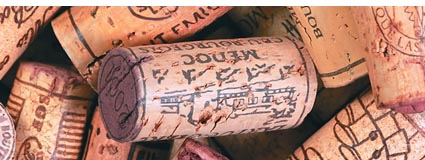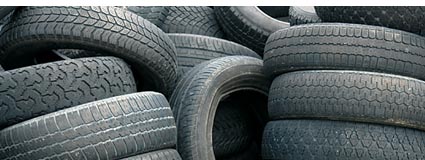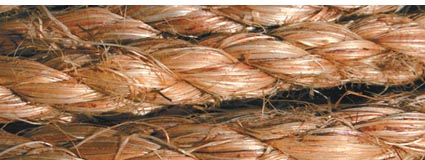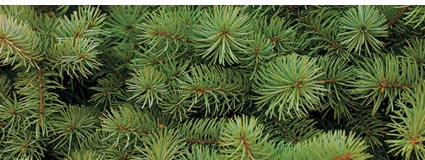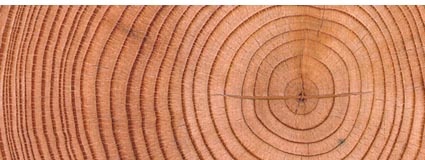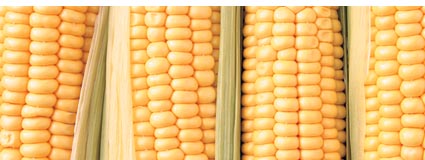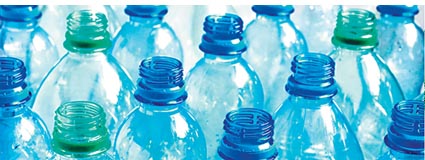green exhibiting |

|
 he first thing people notice about a trade show booth isn't necessarily what's covering the floor. But as any exhibitor knows, that stuff on the ground that attendees walk all over represents a substantial investment. So why not choose an option that satisfies your sense of aesthetics as well as your environmental conscience? he first thing people notice about a trade show booth isn't necessarily what's covering the floor. But as any exhibitor knows, that stuff on the ground that attendees walk all over represents a substantial investment. So why not choose an option that satisfies your sense of aesthetics as well as your environmental conscience?
With the whole going-Green thing being bandied about like a shuttlecock at a badminton tournament, and a barrage of new so-called eco-friendly options available at every turn, it's easy to feel overwhelmed. But flooring can be an easy, and in some cases relatively inexpensive way to Green up your exhibit.
According to Dave Walens, president of Brumark Total Flooring Solutions of Marietta, GA, you should consider three criteria when determining whether a given flooring product is Green (though not every Green flooring option meets all three criterion). First, is it made of recycled products? Second, can it be recycled at the end of its life? And finally, is its source material sustainable?
For example, there is carpet on the market made from recycled plastic bottles that can be recycled once again at the end of its life. But the percentage that can be recycled depends on more than just the carpet fibers. The backing and glue must be taken into consideration, too. Other products, such as Brumark's BruLock carpet tiles, are 100-percent recyclable and are considered a cradle-to-cradle Green flooring product.
K&S International, a Wheeling, IL-based trade show flooring company, offers six Green flooring products, some of which company president Ken Glazer says are Greener than others. "I consider a Green flooring product to be one that puts the environment and the safety of humans at the top of the priority list from pre- and post-production to consumer use," Glazer says.
He offers the company's Sierra Hardwood System as an example. It is produced from renewable raw source material, it has low volatile organic chemical (VOC) emissions, VOC-free maintenance, uses sustainable forestry practices, is manufactured with Green energy, has undergone a life-cycle assessment, and can be recycled.
To help you go Green from the ground up, we've compiled information on eight of the most common Green flooring options available, including the pros and cons of each material. If you're interested in comparing several eco-friendly options, check out the chart on page 33, which lists the average price and weight of each option. The chart also contains information about each source material, in terms of whether it's sustainable and whether it can be recycled.
Going Green might not be a walk in the park, but the information in this article will help you take a step in the right direction by literally allowing your booth visitors to take a step on a recyclable, and/or sustainable, Green floor.e
|
|

The outer bark of the cork oak tree is removed every nine to 10 years without harm to the tree. The bark is then ground into small pieces and baked into slabs. The resulting slabs are then cut to make cork flooring tiles.
Pros: Cork is a renewable, sustainable material, and cork tiles are made using a Green manufacturing process. Cork floors install without adhesives, and damaged pieces can be swapped out without having to replace the entire floor.
Cons: Cork is considered a heavy option as far as drayage is concerned. Heavy objects or sharp heels may cause indentions, though the cork will rebound over time.
|

Worn-out tires are shredded or chopped up, their steel belting is removed, and they are repurposed into rolls of flooring that offer a high level of cushioning.
Pros: Rubber flooring contains as much as 91-percent recycled material that would have otherwise ended up being burned or dumped in a landfill. Rubber flooring is also easy to install, and provides more cushioning for staffers' and attendees' feet than other options.
Cons: Recycled-rubber flooring options tend to be slightly more expensive and heavier than alternative Green materials, costing as much $11.50 or more per square foot.
|

Bamboo stalks are harvested, cut into strips, and processed into a flat product that is cut into tongue-and-groove planks.
Pros: Bamboo grows quickly and can be harvested in just three years. Through processing, it can reach a hardness comparable to maple or black walnut and is quite durable.
Cons: Bamboo comes to the United States from Asia by way of boat - not the Greenest shipping option. Plus, the manufacturing process isn't subjected to the same stringent environmental guidelines used in the United States and Europe. Bamboo is also considered to be among the more expensive Green flooring options.
|

Woven from grass fibers, most sisal and sea-grass rugs maintain their original wheat-toned colors. The natural looks of these products offer a unique aesthetic that stands out among more traditional options.
Pros: When the leaves are harvested, the body of the plant is not damaged, making sisal a sustainable material. It's also relatively lightweight.
Cons: Sisal is difficult to clean. The material generally comes in 13-foot widths, which means it needs to be cut to fit a 10-by-10-foot booth. Sisal also does not provide the same degree of cushioning as carpet or rubber.
|

This product has been around for more than a century and is made of linseed oil, pine rosin, wood flour, and pigment with jute backing. It contains no harmful chemicals, needs no adhesive in click-tile form, comes in a wide range of colors, and is also available in rolls.
Pros: Marmoleum has a natural bactericidal quality, as well as being anti-static, meaning dust and dirt won't adhere to it. It's very durable and is 100-percent biodegradable.
Cons: High-end marmoleum is among the more expensive Green flooring options. Furthermore, it is relatively heavy compared to other options.
|

The Forest Stewardship Council program certifies wood that comes from a properly managed forest based on 10 principles and 56 criteria, including respect of international workers. The FSC also demands compliance with all applicable laws and international treaties.
Pros: FSC-certified wood offers the durability of traditional wood flooring, with the ability to sand out scratches and marks. It also earns high marks on the Green scale.
Cons: Wood is inherently heavy and can be uncomfortable to stand on for hours on end. Wood flooring can also take a long time to install.
|

This most-used flooring choice comes in several Green varieties, such as carpet made from corn-based fibers and polyester (PET) carpet made from recycled soda bottles.
Pros: Green carpet comes in just about any color imaginable. Plus, eco-friendly carpeting options are now available through almost every flooring provider, and they are currently among the most affordable Green options available.
Cons: Since Green carpet options look essentially identical to traditional non-Green carpet options, it's not the most visible way to make a noticeable eco-friendly statement in your company's next exhibit.
|

Like regular Green carpet options, carpet tiles come in a number of varieties, including tiles made from corn-based fibers and PET tiles made from recycled soda bottles. Unlike traditional carpet, which is simply unrolled on the floor, carpet tiles are interlocked to cover the space, and can be stacked for shipping purposes.
Pros: If one of your carpet tiles get stained or damaged, you can simply replace that individual tile, rather than having to replace an entire length of carpet.
Cons: Green carpet tiles are currently more expensive than other carpet tiles due to their backing.
|

With so many so-called Green materials currently on the market, it can be difficult to determine which one is the best for the environment, not to mention which one is the best for your exhibit program's needs. The chart below compares eight different eco-friendly options, denoting those that are made from recycled products, those that can be recycled at the end of their useful lives, and those whose source materials are renewable and/or sustainable. The chart also compares the estimated cost per square foot and approximate weight based on a 10-by-10-foot exhibit space.
Material |
Made of
recycled
products? |
Recycled at
the end of its
useful life? |
Renewable/
sustainable
energy? |
Approximate
weight for a
10-by-10 space? |
Approximate
price per
square foot? |
|
|
|
|
175
pounds
|
$9.50- $13.75
|
|
|
|
|
150
pounds |
$4.50- $11.50 |
|
|
|
|
175
pounds |
$8- $10 |
|
|
|
|
100
pounds |
$3.50- $8.50 |
|
|
|
|
200
pounds |
$7.50- $11.50 |
|
|
|
|
250
pounds |
$21- $25 |
|
|
|
|
45
pounds
(65 with
padding)
|
$4 - $10 |
|
|
|
|
125
pounds |
$10 - $15 |
|
 DEPENDING ON THE SOURCE MATERIAL DEPENDING ON THE SOURCE MATERIAL
|
|
|




 he first thing people notice about a trade show booth isn't necessarily what's covering the floor. But as any exhibitor knows, that stuff on the ground that attendees walk all over represents a substantial investment. So why not choose an option that satisfies your sense of aesthetics as well as your environmental conscience?
he first thing people notice about a trade show booth isn't necessarily what's covering the floor. But as any exhibitor knows, that stuff on the ground that attendees walk all over represents a substantial investment. So why not choose an option that satisfies your sense of aesthetics as well as your environmental conscience? 